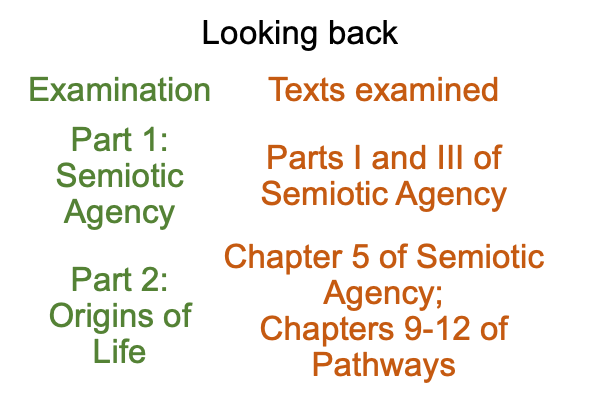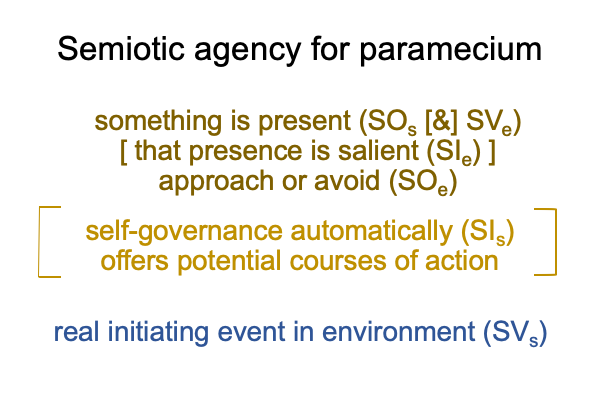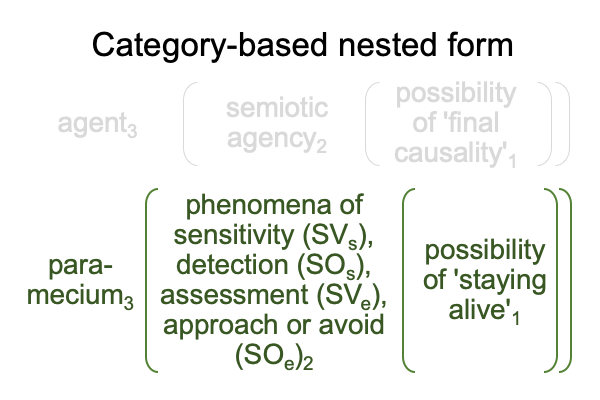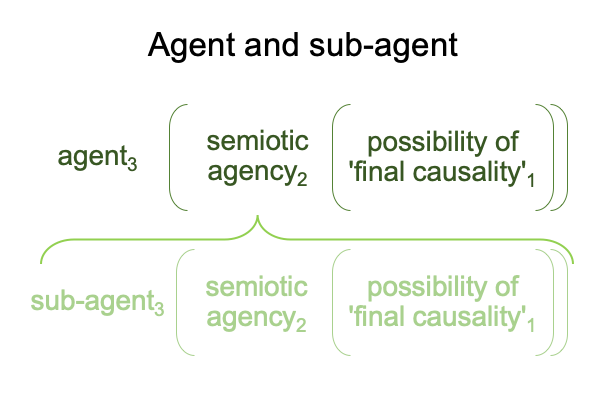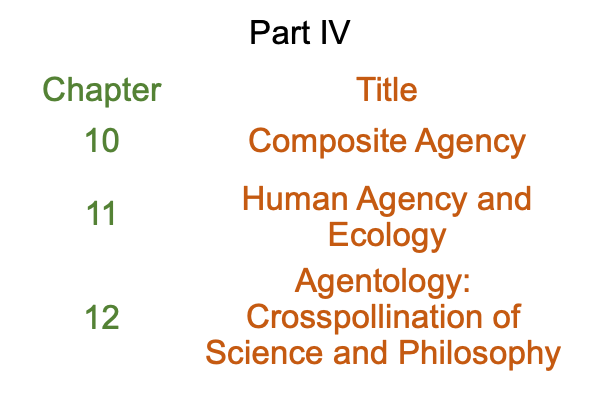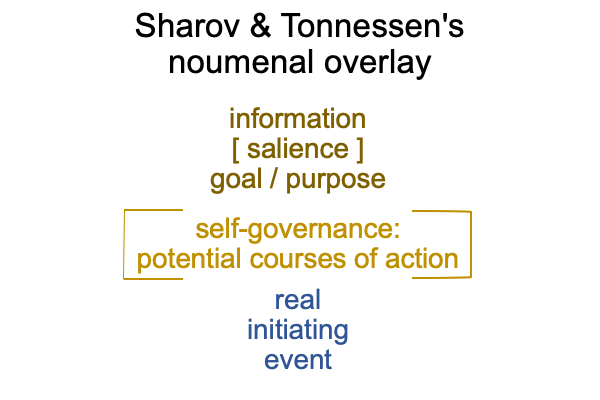Examining Biosemiotics At This Juncture (A Look Back and Forward) (Part 1 of 2)
0471 I have, under examination, two texts that bring the inquirer to the door of a truly postmodern discipline of biosemiotics. Biosemiotics adheres to the relational structure of the Positivist’s judgment, but with a caveat. Metaphysics is allowed. The positivist intellect must accept metaphysics in order to understand semiotic agency2, in the normal context of an agent3 operating on the potential of final causality1. Final causality is necessarily metaphysical.
0472 Here is a picture of the category-based nested form for semiotic agency2 as an actuality2 that requires understanding3((1)).
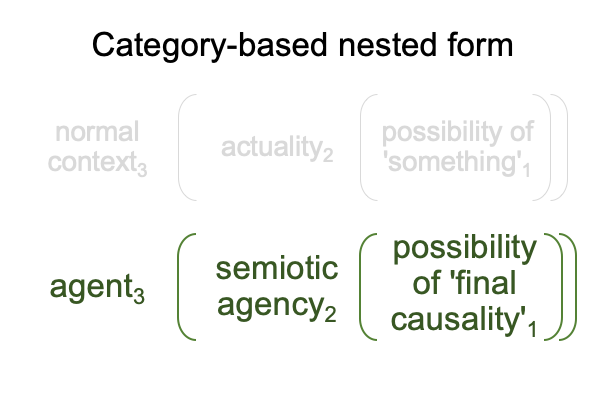
0473 The first book is Semiotic Agency: Science Beyond Mechanism, by biosemioticians Alexei Sharov and Morten Tonnessen. The book is published in 2021 by Springer (Switzerland) and logs in at volume 25 of Springer’s Series in Biosemiotics. Series editors are Kalevi Kull, Alexei Sharov, Claude Emmeche and Donald Favareau. These authors and editors have Razie Mah’s permission for use of the continuing disquisition, with attribution of said blogger.
0474 The second book is Pathways to the Origin and Evolution of Meanings in the Universe, edited by Alexei Sharov and George Mikhailovsky. Each chapter has its own author(s). The book is published in 2024 by Scrivener Press (Beverly, MA) and logs in as volume 1 in Scrivener’s Series on Astrobiology Perspectives on Life in the Universe. Series editors are Martin Scrivener and Phillip Carmical. Chapter authors and book editors have Razie Mah’s permission for use of the continuing disquisition, with attribution of said blogger.

0475 Now, I look back.
The examination starts by examining Parts I and III of Semiotic Agency. This covers historical development and theory of the discipline of biosemiotics. The discussion covers points 0001 to 0270 and will be packaged under the title Biosemiotics As Noumenon 1: Semiotic Agency. The package, by Razie Mah, should be available at smashwords and other e-book venues.
The examination continues by looking at the end of Part II of Semiotic Agency (chapter 5) along with Part II of Pathways(chapters 9-12). The discussion covers points 0271 to 0470 and will be packaged under the title Biosemiotics as Noumenon 2: Origins of Life.
0476 Here is a picture looking back.
